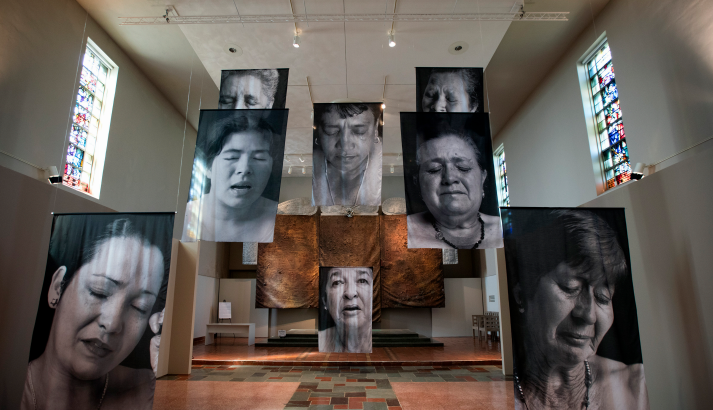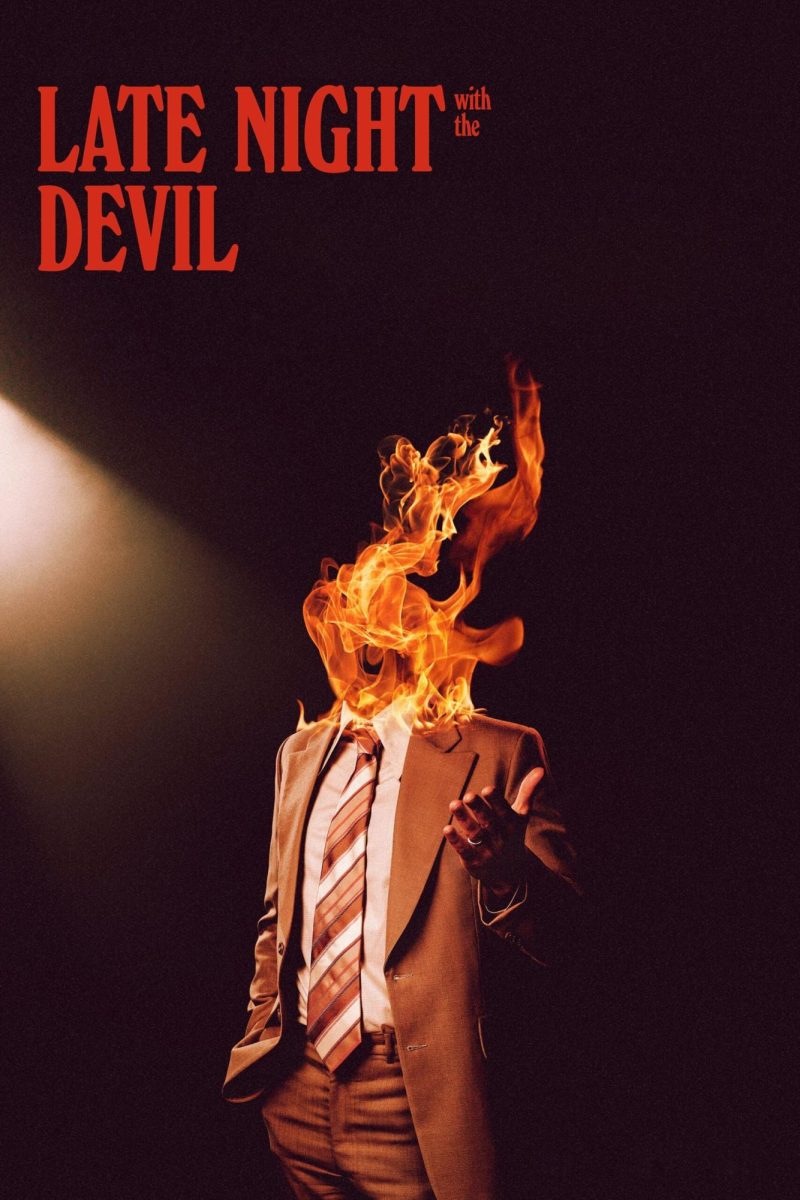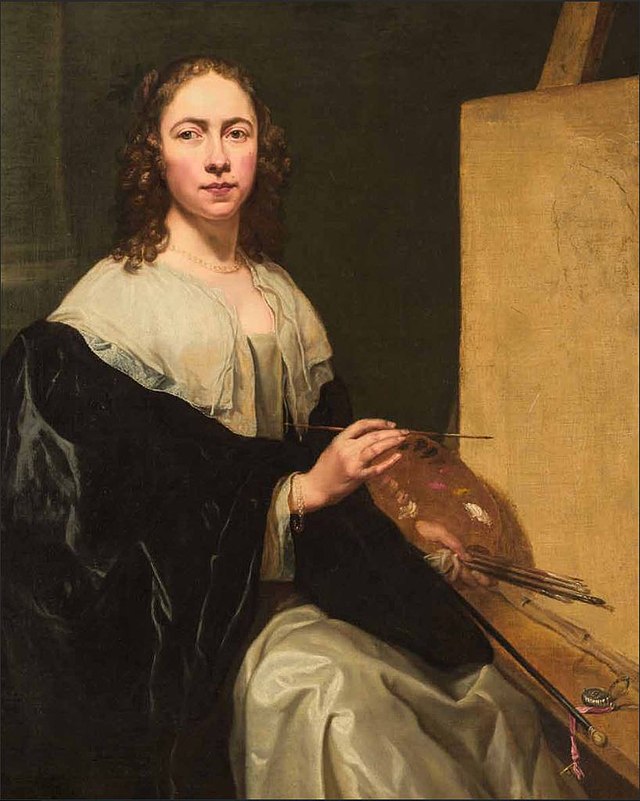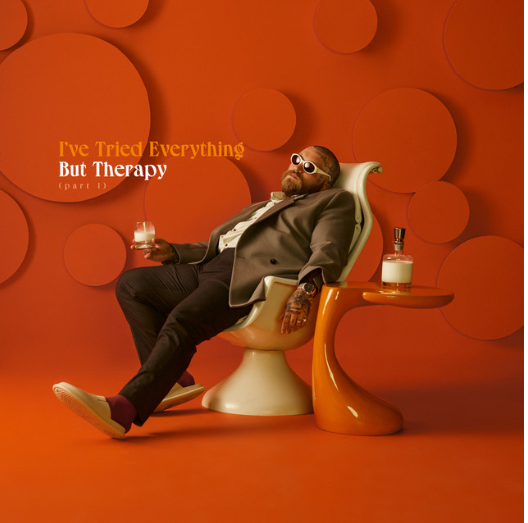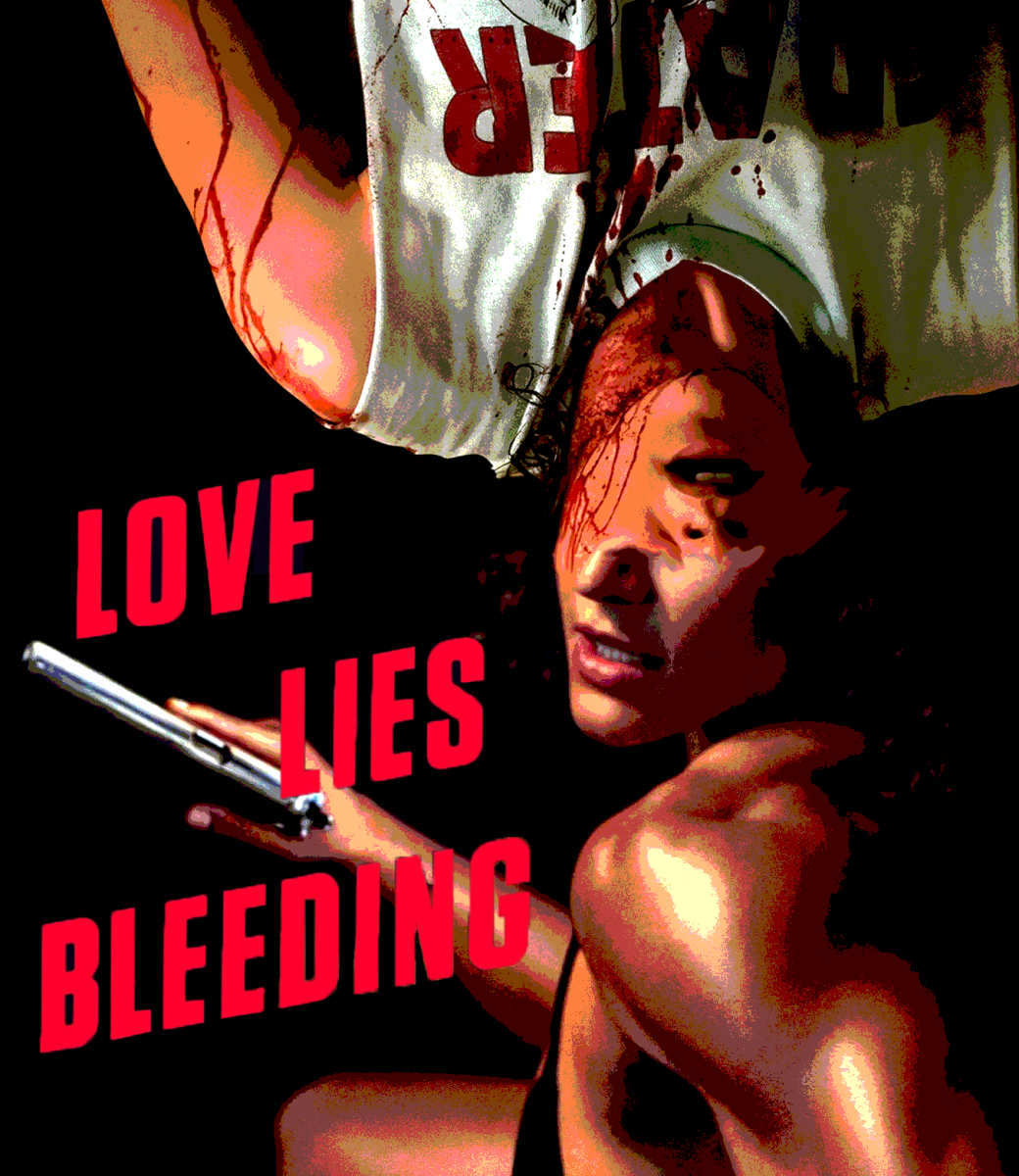The “Sudarios” exhibit, by Colombian social anthropologist and visual artist Erika Diettes, will be on display at the Museum of Contemporary Religious Art (MOCRA) until Dec. 4. MOCRA is located on the Saint Louis University campus, by Fusz Hall.
The medium of the work is black-and-white portraits on fine silk. There are 20 images, each over seven feet tall, with heights ranging from low to the ground to high up in MOCRA’s 30-foot ceiling.
The building was formerly a chapel, fitting Diettes’ aim for this collection to only be displayed in Colombian and international sacred spaces. MOCRA is the third United States site where “Sudarios” has been displayed.
The name of the exhibit, “Sudarios,” is Spanish for “shrouds.” A shroud is a funerary cloth to cover a deceased body. Also, this exhibit is reminiscent of the image of Jesus printed miraculously on his burial cloth, the “Shroud of Turin.
“Diettes elevates [the subjects’] burden to a spiritual one, their suffering acknowledged and dignified in that most sacred of spaces. The larger-than-life scale overwhelms us, as if to suggest the enormity of the violence that lay hidden behind their eyes, and like martyrs seeking redemption, their presence invites us to share in their burden,” art dealer Charles Guice said.
The subjects interviewed were women who witnessed the torture and murder of loved ones during Colombia’s armed conflict.
“When the women were talking about their loved ones, there was one moment that was very intimate; it was a moment of profound silence, the moment where they closed their eyes… It’s like they are alone in that particular moment when they realize that life is never going to be as it was. It’s the before and the after … After you witness something like that, you cannot be the same,” Diettes said.
There has been a long-running conflict between Colombian government forces and the Revolutionary Armed Forces of Colombia (FARC) rebel group. Millions have been displaced, and about 260,000 have died. Fighting has also occurred between rival drug cartels and law enforcement.
“My work is inspired by the extremely complex social, political and cultural situation that exists in Colombia, along with theoretical questions raised by my reaction to the unrelenting violence that my country has experienced for decades. I have decided to bear witness to that violence, and to give the victims — both those murdered and disappeared and their survivors — voice through my art,” Diettes said.
When Diettes visited in September, she had MOCRA’s stained-glass windows opened so the colorful light would shine through the subjects of her art. The display of the images requires the viewer to walk through them, creating an intimate experience.
The images move in the air, creating both a realism and an appearance of the subjects with tears running down their faces. At some perspectives, the viewer can see the women through each other, magnifying their pain. The translucence of the images also creates an ethereal quality of a world between life and death, much like what these women experienced in their grief.
“Erika wanted the works to not be on walls, but together, like a community,” MOCRA employee Clare Hennessy said.
In the side galleries which flank MOCRA’s nave are pieces of the museum’s permanent collection, all of which relate to “Sudarios.”
These include other Latin American works of art referencing classic Christian imagery, such as the Holy Family and the Passion of Christ.
Michael Tracy’s “Triptych: Eleventh, Twelfth and Thirteenth Stations of the Cross for Latin America: La Pasion” references the violence and injustice that Latin Americans have experienced through a religious and healing lens.
Contemporary reflections of the Holy Family are illustrated in Cuban artist Maria Magdalena CamposPons’ work through photographs of her, her son and his father in the work “Sagrada Familia.”
The art made in reaction to other countries’ tumultuous experiences are depicted as well, including art by DoDo Jin Ming, whom experienced important historical events like China’s Cultural Revolution and the Tiananmen Square uprising.
“Sudarios” demonstrates the struggles of Colombia’s people, but also demonstrates the universal experiences of healing through pain and sadness.
This collection of images resonates with all cultures, which includes the entire St. Louis community and all the past and present struggles we have experienced.


